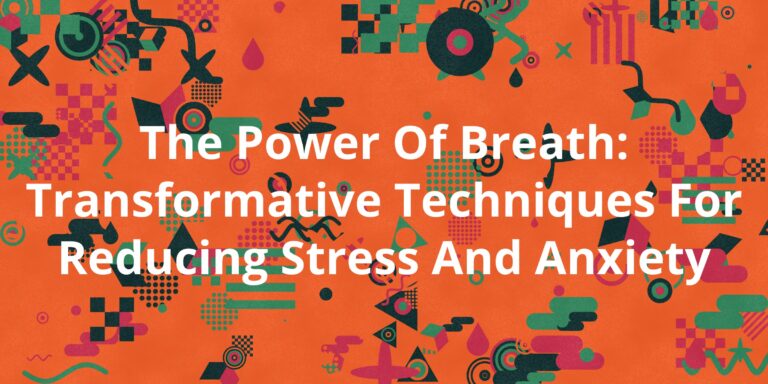The Art of Breathing: A Journey to Inner Peace and Mindfulness for the Newcomer
Breathing is a fundamental aspect of life that we often take for granted. However, the way we breathe can have a significant impact on our overall well-being and mental health. The art of breathing, also known as pranayama in yoga, is a practice that has been used for centuries to promote relaxation, reduce stress, and increase inner peace. In this article, we will explore the benefits of breathwork and provide practical tips for beginners to incorporate it into their daily lives.
The Science Behind Breathing
Breathing involves the inhalation and exhalation of air through our nose or mouth. The process is controlled by the respiratory center in the brainstem, which receives information from chemoreceptors in the body that sense the levels of oxygen and carbon dioxide in the bloodstream.
When we breathe in, air enters the lungs and travels down the bronchi and smaller airways to the alveoli. Here, the exchange of gases takes place between the air and the bloodstream. Oxygen from the air diffuses into the blood, while carbon dioxide diffuses from the blood into the alveoli to be expelled through the nose or mouth.
Breathing has a profound effect on our body and mind. It can regulate our heart rate, lower blood pressure, and reduce stress levels. The act of breathing also activates the parasympathetic nervous system, which promotes relaxation and reduces anxiety.
The Art of Breathing
Pranayama, or breathwork, is an ancient practice that involves conscious control of the breath. It has been used in various spiritual traditions, including yoga, meditation, and qigong, to promote inner peace, reduce stress, and increase mindfulness.
There are many different types of pranayama practices, each with its own unique benefits. Some common techniques include:
1. Ujjayi breath: This involves breathing through the nose while constricting the back of the throat. The sound produced is similar to that of a soft snore and helps to focus the mind and promote relaxation.
2. Anulom Vilom breath: Also known as alternate nostril breathing, this technique involves breathing in through one nostril and out through the other, alternating sides with each breath. This practice helps to balance the left and right hemispheres of the brain and promotes mental clarity.
3. Kapalbhati breath: This involves forceful exhalations followed by quick inhalations. The practice is believed to stimulate the cardiovascular system and promote detoxification.
4. Diaphragmatic breathing: This technique involves breathing deeply into the diaphragm, causing it to expand and contract with each breath. This practice helps to improve digestion, reduce stress, and increase overall well-being.
Incorporating Breathwork into Your Daily Life
Breathwork is a simple yet powerful practice that can be incorporated into your daily life with ease. Here are some tips for beginners:
1. Choose a technique: Start by choosing one or two pranayama practices to practice regularly. You can choose based on your personal preferences or the specific benefits you are looking to achieve.
2. Set aside time: Dedicate a few minutes each day to practicing breathwork. Find a quiet, comfortable space where you won’t be disturbed.
3. Focus on your breath: Pay attention to the sensation of the air entering and leaving your nostrils. Notice any sensations in your body as you breathe.
4. Be present: Allow yourself to fully engage in the practice, letting go of any thoughts or worries that may arise.
5. Practice regularly: Consistency is key when it comes to reaping the benefits of breathwork. Try to practice at least once a day, gradually increasing the duration of your sessions as you become more comfortable.
Conclusion
The art of breathing is a powerful practice that has the potential to transform our lives in countless ways. By consciously controlling our breath, we can promote relaxation, reduce stress, and increase inner peace. Whether you are a beginner or an experienced practitioner, there is always something new to discover about the power of the breath. So why not take a few minutes each day to explore the art of breathing and see how it can enhance your life?



